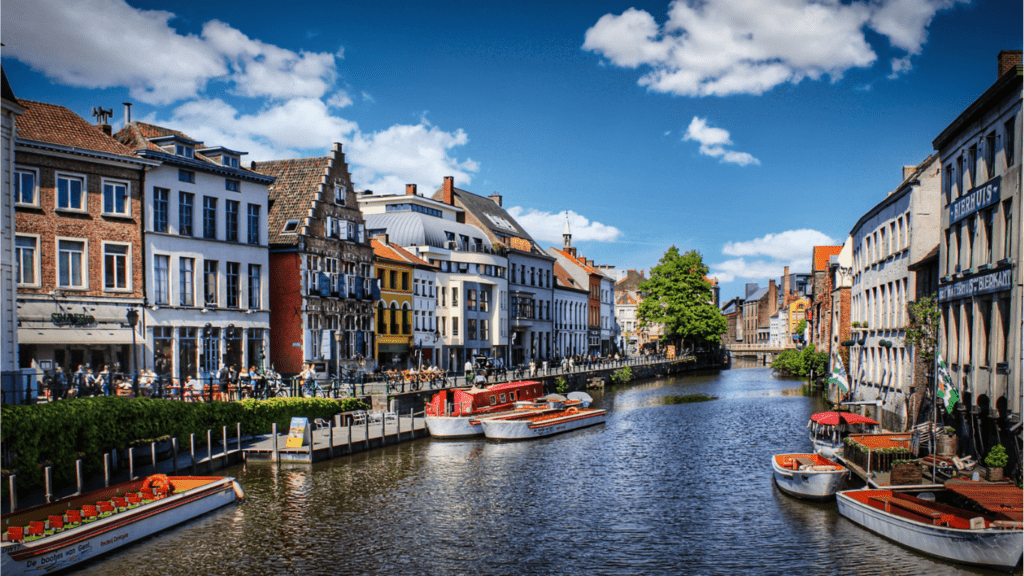Overview of International Sports Tourism
International sports tourism involves fans traveling across borders to watch events. This sector has grown rapidly, driven by major global events and other factors. Favorable visa policies, increased disposable income, and improved travel infrastructure have propelled this growth. Influencers sharing experiences on social media also contribute significantly.
Sports tourism offers unique cultural experiences. Fans explore new destinations while enjoying sports events. For instance, attending the FIFA World Cup in Qatar provided tourists with exposure to Middle Eastern culture. Similarly, the Olympics allow individuals to experience diverse cultures in a single destination.
Technological advancements make sports tourism accessible. Online booking platforms, virtual tours, and real-time updates simplify overseas travel planning. Augmented reality (AR) and virtual reality (VR) offer immersive previews of stadiums and event venues.
Economic impact is substantial. Host cities benefit from increased tourism spending. Accommodation, dining, and local attractions see heightened activity during major sports events. For example, the 2016 Rio Olympics generated $9 billion in foreign visitor spending according to the World Trade Organization (WTO).
Fan engagement has evolved. Brand partnerships and advanced marketing strategies target international audiences. Exclusive packages, behind-the-scenes tours, and meet-and-greet opportunities enhance the travel experience.
International sports tourism blends sports with travel. It leverages global events, technological tools, and economic benefits to offer fans unparalleled experiences.
Factors Driving the Growth of Sports Tourism
Several critical factors fuel the growth of international sports tourism, creating a booming industry that blends love for sports with the appeal of travel.
Major Sporting Events
Major sporting events such as:
- Olympics
- FIFA World Cup
- Super Bowl
attract millions of fans globally. These events provide substantial media coverage, drawing attention and encouraging fans to travel. For instance, the 2018 FIFA World Cup in Russia saw over 3 million spectators, with approximately 2.4 million tickets sold to international visitors. The sheer scale and global appeal of these events create ideal opportunities for sports tourism.
Globalization and Media Coverage
Increased globalization and extensive media coverage have significantly boosted sports tourism. Advances in broadcast technology and the internet make it easy for fans worldwide to follow and become excited about international sporting events. Media channels like ESPN and Sky Sports, along with social media platforms such as Twitter and Instagram, provide real-time updates, behind-the-scenes content, and interactive experiences. These platforms amplify interest, driving fans to attend events in person.
Economic Benefits
Economic benefits play a pivotal role in the rise of sports tourism. Host cities and countries experience substantial economic gains from hosting major sporting events. For example, the 2012 London Olympics generated an estimated $5 billion in tourism revenue. Local economies benefit from increased spending on hotels, restaurants, and local attractions. Businesses often create special deals and packages to attract tourists, further fueling economic growth.
Popular Destinations for Sports Tourism

International sports tourism has popular destinations that offer unique sports experiences. These destinations attract fans with world-class events and rich cultural offerings.
Europe
Europe hosts some of the most iconic sports events and venues. England’s Wembley Stadium stages significant soccer matches, including the FA Cup Final. France attracts tennis enthusiasts with the French Open at Roland Garros. Spain’s Camp Nou in Barcelona and Santiago Bernabéu in Madrid captivate soccer fans year-round. Italy turns heads with the Monaco Grand Prix in Monte Carlo, a prestigious Formula One race.
North America
North America blends diverse sports and entertainment options. The United States showcases the Super Bowl, attracting millions to cities like Miami and Los Angeles. New York City’s Madison Square Garden serves as a mecca for basketball and hockey fans. Canada’s Toronto is a hot spot for NHL games and the Toronto International Film Festival. Mexico City draws motorsport buffs with the Mexican Grand Prix, an exciting Formula One event.
Asia
Asia’s rapid development boosts its appeal as a sports tourism hub. Tokyo, Japan hosts the iconic Summer Olympics, while the Suzuka International Racing Course thrills Formula One fans. South Korea’s Seoul fascinates football enthusiasts during the FIFA U-20 World Cup. India lures cricket fans to iconic stadiums like Wankhede in Mumbai during the Indian Premier League (IPL). China captivates with the Beijing Marathon, combining athletic prowess with cultural immersion.
The Impact of Sports Tourism on Local Economies
International sports tourism significantly boosts local economies, drawing fans and creating opportunities. Events like the Olympics and World Cup lead to direct and indirect economic benefits.
Job Creation
Sports tourism creates numerous jobs in host cities, spanning various sectors. For instance, event planning requires coordinators, logistics experts, and venue staff to handle the influx of tourists. Hospitality industries, including hotels [e.g., Marriott, Hilton] and restaurants [e.g., Olive Garden, TGI Fridays], also see a surge in demand, hiring additional staff to manage increased patronage. Additionally, local guides, transportation providers [e.g., Uber, Lyft], and retail workers benefit from the influx of international visitors.
Infrastructure Development
Host cities often invest in infrastructure improvements to accommodate large-scale sports events. Constructing new sports venues [e.g., stadiums, arenas] and renovating existing ones boosts local construction and engineering sectors. Public transport systems [e.g., subways, buses] get upgrades to handle increased traffic, improving long-term city mobility. Airports and roads often undergo expansions and enhancements, facilitating smoother travel for tourists during and after events.
Cultural Exchange
Sports tourism promotes cultural exchange between visitors and local communities. Fans explore host destinations, engaging with local customs, cuisines, and traditions [e.g., festivals, markets]. This exchange fosters mutual understanding and appreciation, enriching both tourists and residents’ cultural experiences. Events provide platforms for local artists and performers to showcase their talents, further enhancing the cultural vibrancy of the host city.
Challenges Facing Sports Tourism
Despite its rapid growth, sports tourism faces several significant challenges. Understanding these obstacles helps stakeholders develop strategies to mitigate them effectively.
Environmental Concerns
Sports tourism can negatively impact the environment. Large-scale events generate massive waste and carbon emissions. For example, the 2014 World Cup in Brazil produced 2.7 million metric tons of CO2. Additionally, the construction of new sports facilities often leads to deforestation and habitat destruction. Efforts like using renewable energy in venues and promoting sustainable travel can help reduce these environmental impacts.
Overcrowding and Infrastructure Strain
Major sporting events can lead to overcrowding and infrastructure strain in host cities. The influx of tourists can overwhelm public transport, roads, and airports. For instance, during the 2012 London Olympics, the city’s transport system handled an additional 15 million journeys. This surge can cause delays and disruptions for both locals and visitors. Investments in infrastructure upgrades and efficient crowd management strategies are essential to address these challenges.
Political and Security Issues
Political and security issues can pose significant risks to sports tourism. Unstable political climates or heightened security threats can deter tourists. For example, the 2016 Rio Olympics faced concerns over political unrest and safety. Ensuring robust security measures and maintaining political stability are crucial for attracting international visitors. Collaborations with international security agencies can help mitigate risks associated with hosting major sports events.
The Future of International Sports Tourism
The future of international sports tourism looks promising with evolving technologies, sustainable practices, and emerging markets driving growth in the sector.
Technological Innovations
- Technological innovation will significantly shape international sports tourism.
- Advances like augmented reality (AR) and virtual reality (VR) offer immersive experiences for fans, letting them virtually visit stadiums or attend live events.
- Online booking platforms streamline travel arrangements, while mobile apps provide real-time updates, maps, and language translation.
- Blockchain technology ensures secure transactions and ticket verification, reducing fraud and enhancing trust.
- Artificial intelligence (AI) and data analytics personalize travel recommendations, tailoring packages to individual preferences.
Sustainable Tourism Practices
Sustainable practices are crucial for mitigating the environmental impact of sports tourism. Event organizers focus on reducing waste, conserving energy, and promoting eco-friendly transportation. For example, the Tokyo 2020 Olympics utilized recycled materials for medals and emphasized public transit. Host cities invest in renewable energy sources and green infrastructure to support large-scale events sustainably. Fans also play a role by adopting green behaviors, such as staying in eco-friendly accommodations and minimizing single-use plastics.
Potential Growth Markets
Several regions show potential for growth in international sports tourism. In Asia, China and India are rapidly developing sports infrastructure and hosting major events, attracting global audiences. Africa is emerging with countries like South Africa and Kenya hosting significant tournaments in cricket and athletics. South America’s interest continues, with nations like Brazil and Argentina drawing fans for soccer and other sports. Each region combines cultural richness with diverse sports experiences, making them appealing destinations for international travelers.
The future of international sports tourism is driven by technological advancements, a commitment to sustainability, and the exploration of new markets, ensuring the sector’s continual evolution and expansion.



